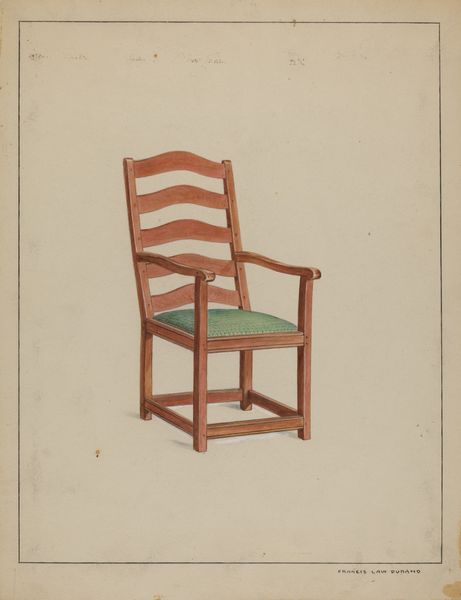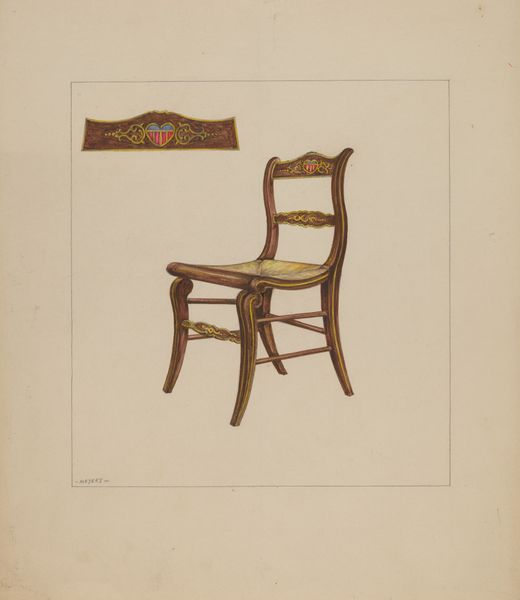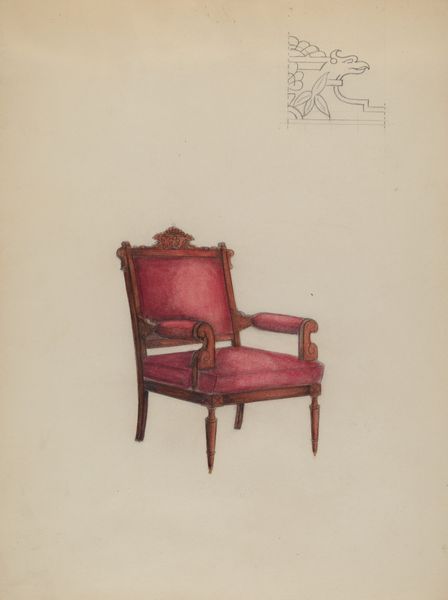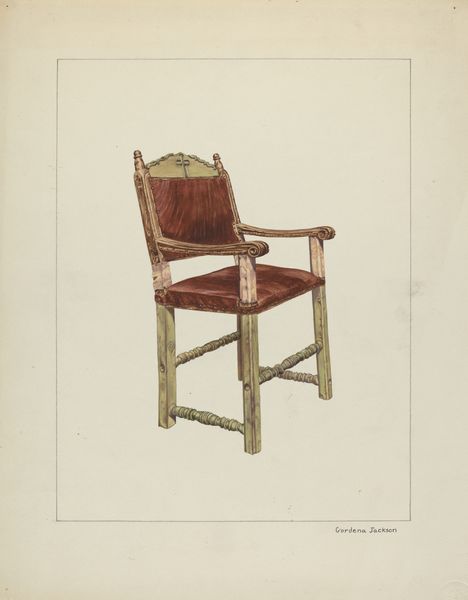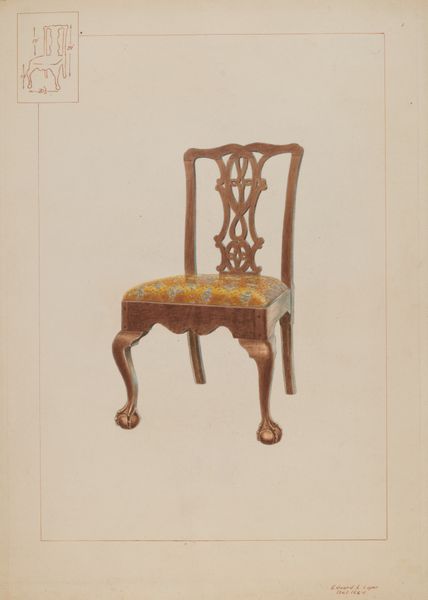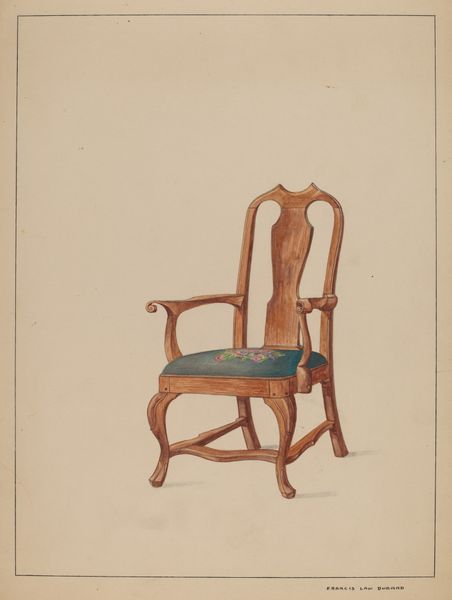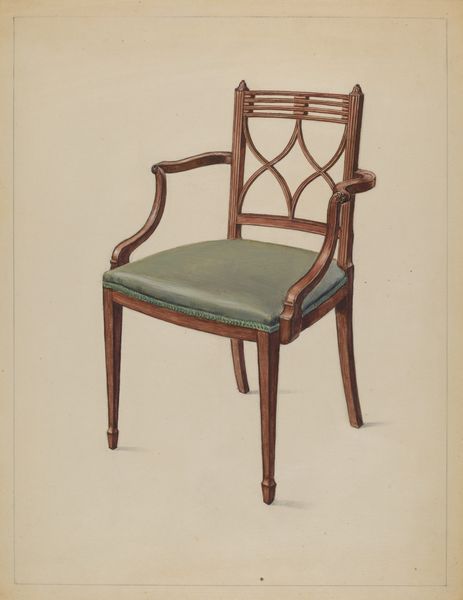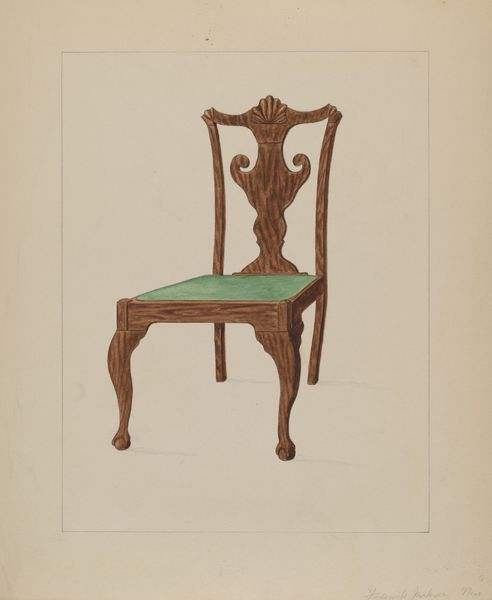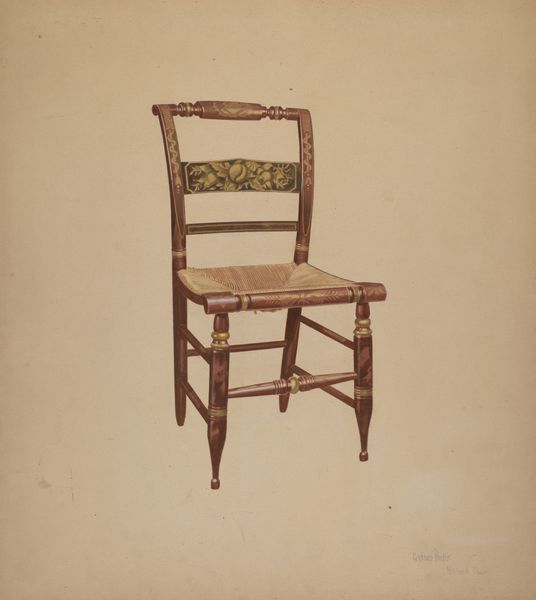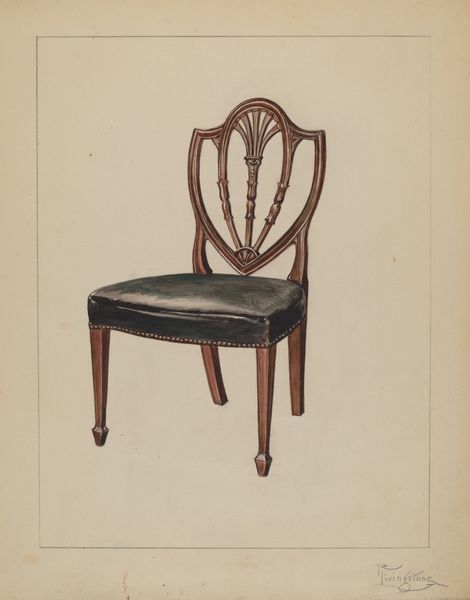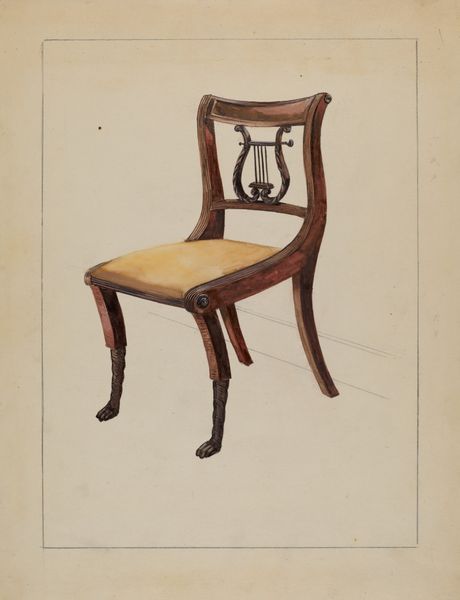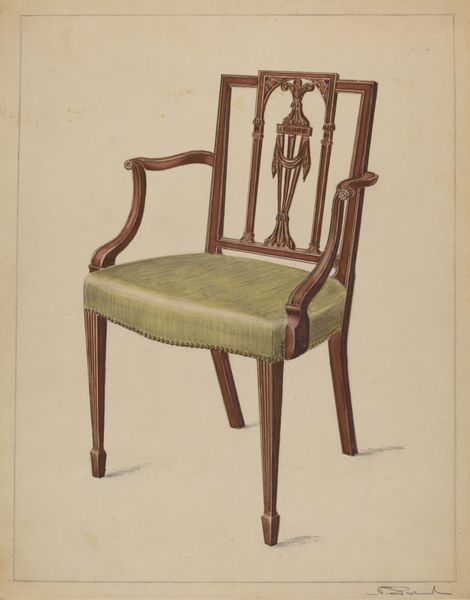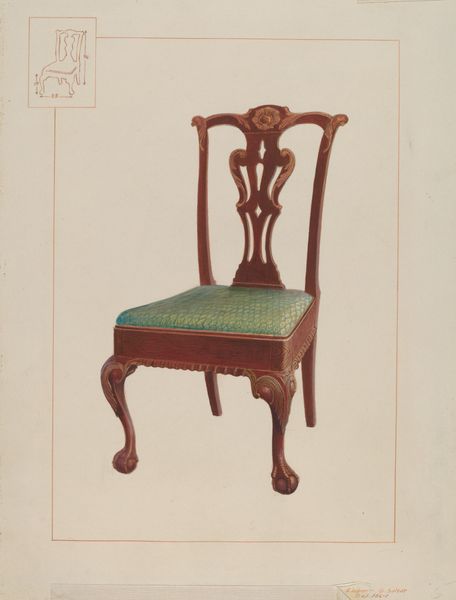
drawing, paper, watercolor
#
drawing
#
furniture
#
paper
#
watercolor
#
watercolour illustration
#
academic-art
#
watercolor
Dimensions: overall: 27.9 x 23 cm (11 x 9 1/16 in.) Original IAD Object: 26 1/2"high; 13 3/4"wide
Copyright: National Gallery of Art: CC0 1.0
Curator: What a charming piece! This watercolor drawing on paper, titled "Child's (living room) Chair," was created around 1937 by Francis Law Durand. It has such a delicate quality, doesn’t it? Editor: It does, although "delicate" isn't the first word that comes to mind. I’m immediately struck by the oddly imposing scale of the chair, given that it's supposed to be for a child. It feels like a miniaturized throne. Curator: I can see that. What strikes me is how meticulously rendered each detail is. You can see the texture of the upholstery and the intricate woodwork. Durand really emphasizes the craftsmanship and materials used. He calls attention to the making of this thing. Editor: Absolutely. And it raises questions about the societal role this chair occupies. For what kind of child was this chair intended? Who benefits from creating such an object and how does the child relate to social conventions in this very domestic interior scene? It subtly speaks to the codification of class, doesn’t it? Curator: Indeed. It seems a study in upper-middle class domesticity. Considering Durand’s body of work, his focus on the depiction of material objects and their production, rather than portraits, can be seen as his way of highlighting the labor behind luxury goods, especially within the constraints of the domestic sphere. Editor: The fact that this chair has been rendered by hand, elevates, even immortalizes it. What can this unique art object tell us about furniture and its use through history? We get the opportunity to rethink our relations with everyday items. Curator: And how objects speak volumes about society, from the resources required for manufacture to the values they embody and uphold. What a wonderful exploration of something so simple. Editor: I agree, seeing it with fresh eyes reveals how much cultural information these images and objects transmit to those willing to reflect on social norms. It goes beyond just aesthetics.
Comments
No comments
Be the first to comment and join the conversation on the ultimate creative platform.
